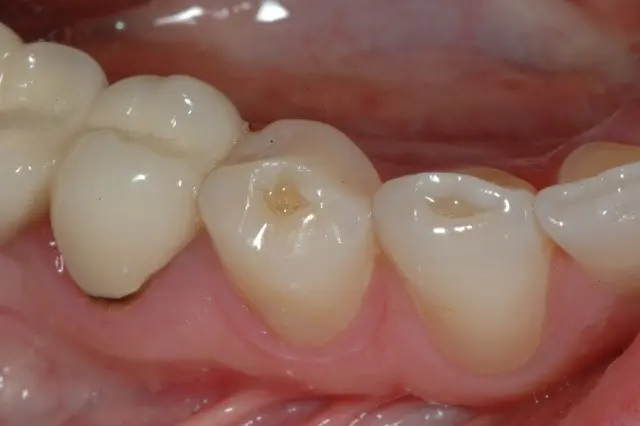Our teeth are designed to last a lifetime, but many people experience tooth wear that gradually wears down their natural enamel. Worn down teeth not only affect the appearance of your smile but can also lead to sensitivity, pain, and even more serious dental problems if left untreated. Understanding why your teeth are wearing down is the first step toward protecting your oral health and maintaining a confident smile.
What Is Tooth Wear?
Tooth wear refers to the loss of tooth structure caused by factors other than decay or trauma. It’s a natural process to some degree, as teeth undergo wear from chewing and biting over the years. However, excessive or premature wear can weaken teeth and lead to discomfort.
There are three main types of tooth wear:
- Attrition: This is wear caused by tooth-to-tooth contact, typically from grinding or clenching. It results in the flattening or shortening of the biting surfaces.
- Abrasion: This occurs when external mechanical forces wear down the teeth, such as aggressive tooth brushing or chewing on hard objects.
- Erosion: This is the chemical wearing away of enamel caused by acids from food, drinks, or stomach acid reflux.
Understanding these types helps identify why your teeth might be wearing down and guides the best prevention and treatment strategies.
Common Causes of Worn Down Teeth
1. Teeth Grinding and Clenching (Bruxism)
One of the most common causes of tooth wear is bruxism — the unconscious grinding or clenching of teeth, often during sleep. This excessive pressure causes attrition, wearing down the enamel and sometimes leading to cracked or chipped teeth. Stress, anxiety, sleep disorders, and misaligned teeth can contribute to bruxism.
2. Acidic Foods and Beverages
Frequent consumption of acidic foods and drinks like citrus fruits, sodas, wine, and sports drinks can erode the enamel through chemical wear. Acid erosion thins the protective enamel layer, making teeth more vulnerable to wear and sensitivity.
3. Aggressive Brushing and Poor Oral Hygiene Habits
Using a hard-bristled toothbrush or brushing with too much force can cause abrasion along the gum line, exposing sensitive dentin underneath the enamel. Using abrasive toothpaste can also contribute to this type of wear.
4. Age and Natural Wear
Over time, the cumulative effect of chewing and biting naturally wears down the enamel. Older adults may experience more noticeable tooth wear, especially if they have other risk factors like bruxism or acid erosion.
5. Gastroesophageal Reflux Disease (GERD) and Vomiting
Stomach acid reaching the mouth, either due to GERD or frequent vomiting, is highly acidic and can cause significant erosion of tooth enamel. This often leads to a characteristic smooth and shiny tooth surface.
6. Misaligned Bite or Malocclusion
When teeth don’t align properly, uneven pressure during chewing can cause certain teeth to wear down faster than others. This uneven wear can exacerbate dental problems over time.
Signs and Symptoms of Worn Down Teeth
Recognizing the signs early can help prevent further damage. Common symptoms include:
- Flattened, chipped, or shortened teeth
- Increased tooth sensitivity to hot, cold, or sweet foods
- Discoloration, as worn enamel reveals the yellower dentin underneath
- Rough or sharp edges on teeth
- Jaw pain or headaches, especially if caused by bruxism
- Changes in bite or difficulty chewing
If you notice these symptoms, it’s important to consult your dentist for a thorough evaluation.
How Is Tooth Wear Diagnosed?
Your dentist will examine your teeth visually and may take X-rays or impressions to assess the extent of wear. They will ask about your habits, diet, and medical history to identify underlying causes like bruxism or acid reflux.
Preventing and Managing Tooth Wear
1. Address Bruxism
If grinding or clenching is causing your tooth wear, your dentist may recommend a night guard — a custom-fitted mouthpiece that protects your teeth during sleep. Stress management techniques and treating any underlying sleep disorders can also help.
2. Modify Diet
Limit acidic foods and drinks, or consume them with meals rather than between meals to minimize acid exposure. Rinsing your mouth with water after acidic intake and waiting at least 30 minutes before brushing can reduce erosion.
3. Practice Gentle Oral Hygiene
Use a soft-bristled toothbrush and non-abrasive toothpaste. Brush gently with circular motions and avoid aggressive horizontal scrubbing.
4. Treat Medical Conditions
If you have GERD or other conditions causing acid reflux, consult your healthcare provider for treatment. Managing reflux will help protect your teeth from acid erosion.
5. Regular Dental Checkups
Routine dental visits allow early detection of tooth wear. Your dentist can provide treatments like dental bonding, veneers, or crowns to restore worn teeth and protect them from further damage.
Restoring Worn Teeth
Depending on the severity, worn teeth can be restored using various cosmetic and restorative procedures:
- Dental bonding: Applying tooth-colored resin to rebuild worn surfaces.
- Veneers: Dental veneers in Harrisonburg, VA are thin porcelain shells that are bonded to the front surface of your teeth, providing a natural and beautifully enhanced appearance.
- Crowns: Caps that cover and protect severely worn or damaged teeth.
- Orthodontics: Correcting bite alignment to prevent uneven wear.
Early intervention can prevent more extensive damage and maintain both function and aesthetics.
Final Thoughts
Worn down teeth are a common issue but often preventable and manageable with the right knowledge and care. By understanding the causes and signs of tooth wear, you can take proactive steps to protect your smile and maintain your oral health for years to come. If you suspect your teeth are wearing down faster than normal, don’t wait — schedule a visit with your dentist to explore your options.
Also Read-Understanding the Arbitration Process in Healthcare Payment Disputes
